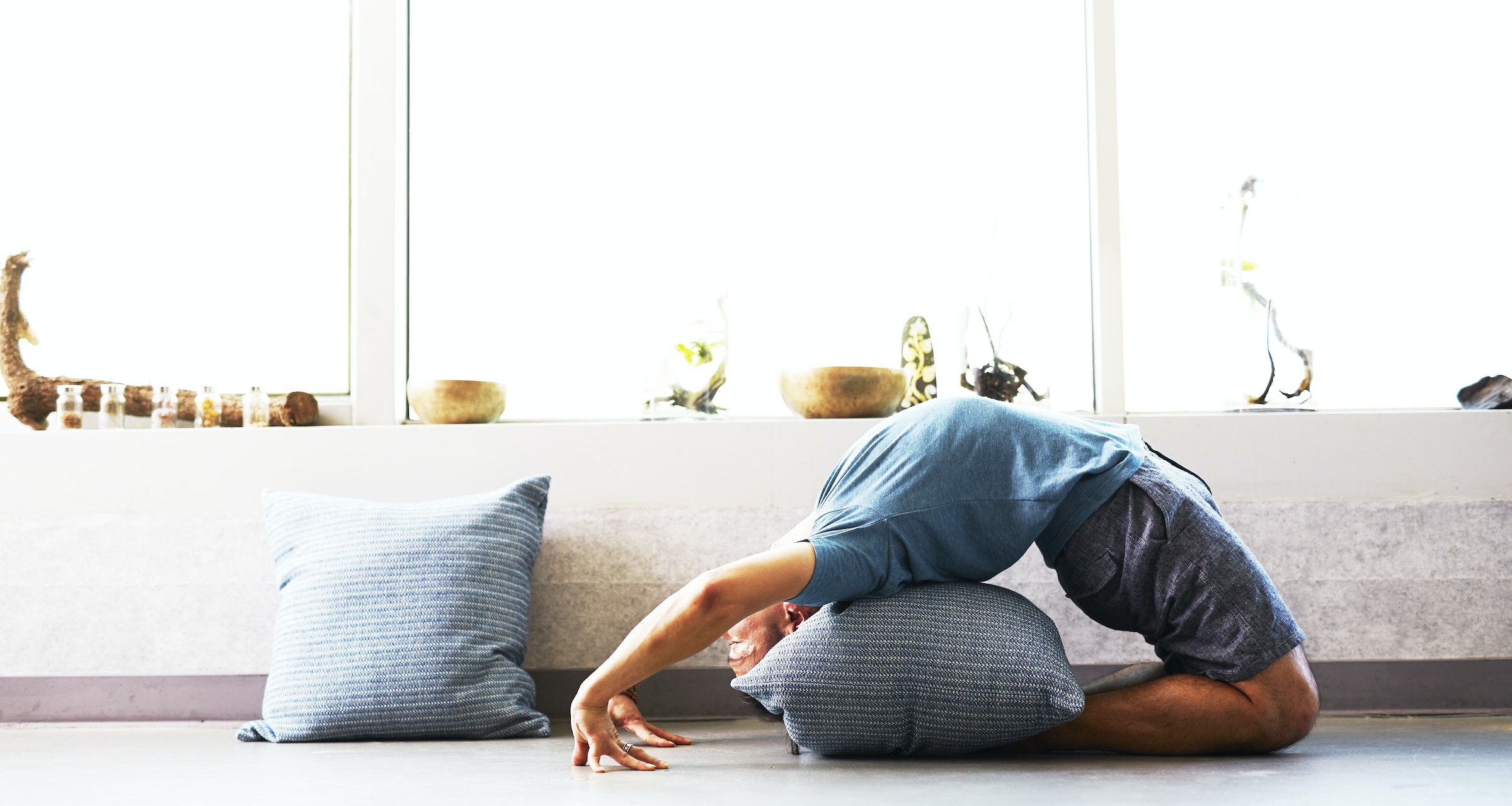
No one wants to be awake counting sheep, tossing or turning, or just staring at the ceiling all night. According to a 2020 survey by the Centers for Disease Control and Prevention (CDC), a surprising 14.3% of adults in the US had difficulty falling asleep most days or every day. When you’re sleeping and resting, your cells are resting, too, and your body takes this time to regenerate, repair muscles, grow tissues, and release important hormones. Better sleep means better health. Adding yoga to your bedtime routine is one of the best natural ways to improve your sleep quality. Yoga is a type of meditative exercise where you focus on your breathing while practicing specific poses and movements that can help calm your mind, ease muscle tension, and lull you off to a soothing slumber.

How does yoga help you sleep?
Yoga improves sleep quality for all ages, from children to the elderly, and it’s especially beneficial for people dealing with insomnia. An impressive study reveals that this age-old practice promotes deeper sleep and reduces the need for sleep medications.
Over 85% of yoga practitioners report stress reduction, and over 55% report better sleep overall. Stress is one of the biggest obstacles in the way of a good night’s sleep. Studies show practicing yoga reduces levels of the stress hormone cortisol. It’s typically more difficult to fall asleep with higher levels of cortisol.
Yoga often involves mindfulness and a state of non-judgmental awareness, which can decrease sleep disturbances and increase levels of the sleep hormone melatonin. Deep breathing also induces relaxation to get your body primed for sleep.

Best yoga poses for your bedtime routine
Hot yoga and other high-activity forms of yoga elevate your heart rate. When you’re winding down for bed, choose a slower and more restorative type of yoga with gentle body postures, such as Hatha yoga. The goal is to use key poses and breathing techniques to gently stretch and move your body, calm and center your mind, and prompt a state of relaxation.
Here are the best yoga poses to add to your nighttime routine.
Standing forward fold or bend (uttanasana)
From a standing position, slowly bend your torso forward in front of your legs as if you’re folding over, trying to reach your toes. You can rest your hands on your shins, elbows, or the floor. Take deep breaths and try to keep your back straight in the folded position.
Legs up the wall (viparita karani)
Legs up the wall means just that — you lie with your arms at your sides and your legs straight up resting on a wall. Your hips can be touching the wall or a short distance away, and you rest your legs up against the wall so your body makes an ‘L’ shape.
Corpse pose (savasana)
Yoga practices often end with corpse pose, where you lie on the floor on your back with your feet about hip-distance apart, your arms by your sides, and your palms facing up. Keep your legs out straight and relax every part of your body.
Reclined butterfly (supta baddha konasana)
Lay on your back with your knees bent and your hands above your head or by your sides. Press the bottoms of your feet together and allow your knees to fall out to the side like the wings of a butterfly.
Cat-cow pose (chakravakasana)
Start on your hands and knees in table pose with your hands shoulder-width apart. To mimic the ‘cow’ pose, as you inhale, tilt your head up to the ceiling, press your chest forward, invert your back, and bring your pelvis up. To mimic the ‘cat’ pose, as you exhale, arch your back to round your spine outward and bring your head and pelvis down like a playful cat.
Happy baby (ananda balasana)
Lay on your back and bend your knees up toward your chest at a 90-degree angle as far as you can go. Reach forward and hold on to your feet. Gently rock from side to side, just like a happy baby.

Top tips for adding yoga to your bedtime routine
Even if you can only practice for 10 or 20 minutes every evening, it can make a big difference. Here are some top tips for practicing yoga before bed:
- Stick to slower types of yoga like yin or hatha.
- Focus on your breathing and lengthen your inhales and exhales.
- Find a quiet place with a comfortable temperature so you can practice where you won’t be distracted.
- Take electronics out of the room so you can completely absorb yourself in your practice.
- You may want to get more comfortable by using pillows and wearing loose-fitting pajamas or clothes that won’t restrict your movements.
- Find an accountability partner, like a family member that would also enjoy a bedtime practice and the benefits that come along with it.
- For a more tranquil aroma and atmosphere, level up your nighttime yoga with dim lighting or candles, peaceful music, and essential oil diffusers.
Most importantly, be kind to yourself and remember that it takes time to build better habits and routines, so take it one step at a time or one yoga pose at a time.



